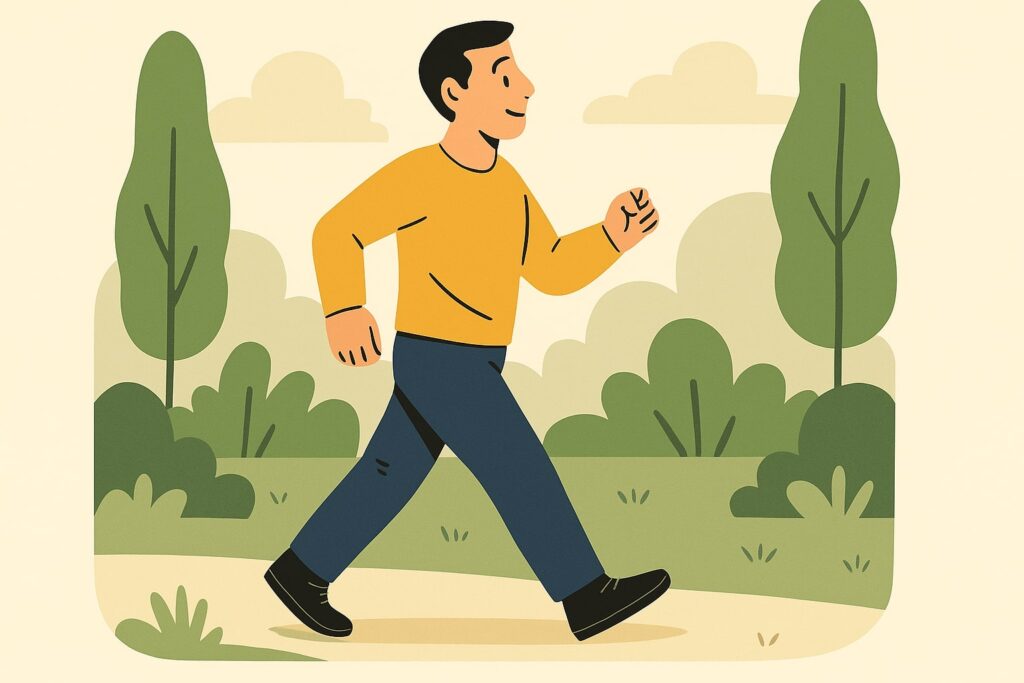Introduction:
The historical bond between dogs and humans is a testament to a relationship forged in the crucible of survival and companionship. From being indispensable hunting partners in the early days of civilization to revered protectors in ancient cultures, dogs have walked alongside us, leaving pawprints on the pages of history. As we delve into the annals of time, we witness the transformation of dogs from utility animals to cherished companions, their loyalty echoing through generations.
Beyond their historical roles, dogs have seamlessly integrated into the very fabric of our emotional lives. Scientific studies affirm what dog lovers have known for centuries – the presence of a dog has a transformative effect on our well-being. The unconditional love they offer, devoid of judgment or expectation, releases the oxytocin hormone, known as the “love hormone,” fostering a bond that transcends words and spans the spectrum of human emotions.
While companionship forms the cornerstone, the contributions of dogs extend far beyond the realms of emotional support. Trained as service dogs, these canines become eyes for the visually impaired, ears for people who are deaf or hard of hearing, and steadfast aides for those facing mobility challenges. In law enforcement and public safety, dogs act as vigilant protectors, utilizing their acute senses and specialized training to detect threats and apprehend suspects.
Key Takeaways
| Key Takeaway Number | Key Takeaways |
|---|---|
| 1 | Dogs have a rich historical connection with humans, evolving from utility roles to cherished companions. |
| 2 | The emotional bond between humans and dogs positively impacts mental health, releasing oxytocin. |
| 3 | Service dogs undergo specialized training to assist individuals with disabilities, fostering independence. |
| 4 | Police and military dogs contribute significantly to public safety through specialized training and collaboration. |
| 5 | Therapy dogs play a vital role in healthcare, reducing stress and contributing to healing. |
| 6 | Search and rescue dogs undergo rigorous training to navigate challenging terrains and locate missing persons. |
| 7 | Dogs can be trained to detect medical conditions, providing valuable assistance to individuals with specific health needs. |
| 8 | Working dogs face challenges like stress, injuries, and exposure to hazardous substances. |
| 9 | Individuals can support canine welfare through adoption, responsible ownership, and advocacy. |
| 10 | The future of the human-dog relationship holds exciting possibilities, from advancements in training to innovations in healthcare and technology. |
Historical Significance of Dogs in Human Societies
The importance of dogs to human cultures stretches back thousands of years, linking their fates closely with our own. In the beginning dogs were hunting partners С providing valuable sense and agility to help gather food. Dogs’ roles have evolved as civilizations have. They morphed into guardians who would protect settlements from threats, and companions who would provide loyalty and companionship to people and families.
The ancient Egyptians held dogs in high esteem, as shown in their art, and considered them faithful guardians. The Greek gods were animal deities, and dogs were worshiped as symbols of fidelity. Some of these dogs were used by the Roman Empire for everything from guarding estates to battling with soldiers.
In the Middle Ages, dogs played vital roles hunting and herding, again, with specific breeds developed for those purposes. During the Renaissance, this perception changed and dogs started being depicted in some of the same portraits as their human counterparts, highlighting the emotional relationship between humans and canines.
By the time the Industrial Revolution rolled around, dogs had new roles as city dwellers. They were loyal, adaptable, and made great family pets. The dog is a symbol of loyalty, protection, and perseverance — traits common to all dogs and all dog owners in modern times.
From the furthest reaches of time, we find the fascinating story of dogs and humans travelling through history together; all being said there is more to this partnership than just functionality, it has become a true bond that has survived through the centuries.
How Dogs Provide Companionship and Emotional Support
In addition to their historical roles, dogs have moved easily into companionship, providing unparalleled emotional security to people and families. So strongly do dogs relate to us that they are tuned into our emotions and respond to them.
A study found that interacting with dogs releases a hormone called oxytocin, sometimes referred to as the “love hormone” in both people and canines. This hormonal response plays a role in promoting well-being and deepens the connection between the two species. Even petting a dog reduces stress, lowers blood pressure and boosts the mood.
Dogs are perceptive animals that can read the slightest changes in body language and facial expression in humans. They bring comfort in difficult times, replenishing us with unconditional love when we need it most. It has this deep, primal communication that surpasses language.
From homes to healthcare settings, dogs provide companionship and comfort to those struggling with the physical or emotional challenges of life. Their unwavering love and intuition also make them truly special members of families, and in turn they enrich the lives of anyone lucky enough to have these gifts in their lives.
Training Service Dogs for Assistance
The training of service dogs is a detailed and intentional process whereby these four-legged helpers are trained to facilitate those with disabilities as they go through life. Service dogs are individually matched based on temperament, intelligence, and the dog’s ability to adapt or learn new tasks.
It starts early — usually in the puppyhood stage. They start with basic obedience skills, then move on to learn specialized tasks that are catered to the needs of the person or people they’ll one day serve. Guide dogs, for instance, are trained to steer clear of obstacles and guide people with impaired vision.
Mobility service dogs are taught to grab things, open doors and steady their owners. We only use positive reinforcement, so the dogs learn that what they do ends up in a good result.
Socialization is an important part of service dog training. Service dogs need to be calm and focused in any environment, including crowded streets and busy public places. This exposure to different situations helps them adapt and effectively perform their duties without being distracted.
The relationship between service dogs and their handlers is the foundation of their success. This active participation promotes trust and enables effective communication. This allows for the service dog to become attuned to the specific needs of its human user.
These highly trained canines graduate from programs with the goal of improving the independence and quality of life for individuals with disabilities. A good service dog will do so much more than what they are taught to do, they become your rock and your partner.
Dogs’ Contribution to Public Safety and Law Enforcement
With their finely tuned safety senses and specialized training, dogs are assets in nearly every aspect of public safety and law enforcement they serve. Police and military dogs, commonly referred to as K-9 units, are trained to do specific jobs that make their human co-workers more effective.
Tracking is one of the primary functions of police dogs. These extremely trained pooches are able to follow a scent trail across disparate terrain, supporting the search for missing men and women or suspects. With a much more developed sense of smell, can detect scents in long distances.
Detection is another critical aspect of their role. Police dogs are trained to identify substances such as drugs or explosives by scent. Their accuracy in detecting these substances is unparalleled, making them valuable assets in situations where human detection methods may fall short.
Apprehension is yet another skill in the repertoire of police dogs. These canines are trained to apprehend suspects by using controlled force. The presence of a well-trained police dog often serves as a deterrent, contributing to the safety of law enforcement officers and the public.
The bond between K-9 officers and their handlers is a cornerstone of their effectiveness. Handlers develop a deep understanding of their dog’s behavior and cues, creating a seamless partnership in high-pressure situations. This bond goes beyond professional collaboration; it is a relationship built on trust and mutual dependence.
The contribution of dogs to public safety is immeasurable. From tracking down suspects to detecting dangerous substances, their abilities enhance the efficiency and effectiveness of law enforcement. As we explore the multifaceted roles of dogs in these critical operations, it becomes clear that their impact extends far beyond traditional perceptions of canine companionship.
Therapy Dogs in Healthcare Settings
In healthcare settings, the presence of therapy dogs has proven to be a powerful and positive force in promoting healing and well-being. These specially trained dogs bring patients comfort, joy, and companionship, creating a therapeutic environment beyond traditional medical care.
The calming effect of therapy dogs is well-documented. Interactions with these gentle and empathetic animals have been shown to reduce stress, anxiety, and even pain levels in patients. Dogs’ unconditional love and non-judgmental nature create a sense of emotional support that goes beyond the scope of medical treatments.
Therapy dogs visit various healthcare settings, including hospitals, nursing homes, rehabilitation centers, and disaster-stricken areas. Their presence provides a welcome distraction for patients, fostering a positive atmosphere and contributing to healing.
One notable aspect of therapy dog training is the emphasis on temperament and behavior. These dogs must be calm and friendly, even in unpredictable or challenging situations. Their ability to remain composed and gentle ensures a positive experience for individuals with varying health conditions.
The benefits of therapy dog interactions extend to healthcare professionals as well. The presence of these canine companions has been shown to reduce stress and burnout among medical staff, creating a more positive and supportive working environment.
As we delve into the role of therapy dogs in healthcare, it becomes evident that their impact goes beyond the physical realm. These furry ambassadors of comfort play a crucial role in uplifting spirits, providing emotional support, and contributing to the holistic well-being of individuals and communities.
Training Dogs for Search and Rescue Operations
Search and rescue dogs are unsung heroes in times of crisis, using their keen senses and specialized training to locate missing persons in various environments. The training of these remarkable canines is a meticulous process that prepares them for the challenges of search and rescue missions.
The training begins early in a search and rescue dog’s life, often as puppies. Basic obedience skills are honed before introducing them to the specific tasks required in their role. Developing a strong bond with their handler is crucial, as it forms the foundation for effective communication during high-pressure situations.
One of the primary skills search and rescue dogs acquire is scent detection. These dogs can pick up on a person’s scent, even in complex settings such as disaster-stricken areas. The ability to discriminate between different scents and follow a specific trail is paramount to their success in locating individuals.
Search and rescue dogs are trained to navigate various terrains, from dense forests to urban rubble. Their agility and adaptability allow them to access areas challenging for humans or machinery. This versatility makes them indispensable assets in a wide range of scenarios.
Trust and mutual reliance characterize the relationship between a search and rescue dog and their handler. Handlers must interpret the dog’s behavior and cues accurately, allowing for effective collaboration in the field. This bond is a testament to the resilience and loyalty of these extraordinary canines.
Search and rescue dogs provide a beacon of hope in natural disasters, accidents, or other emergencies. Their ability to locate and rescue individuals, often in critical conditions, showcases the remarkable capabilities of these highly trained companions. As we explore their role in search and rescue operations, it becomes clear that their contributions extend beyond conventional expectations.
Can Dogs Detect Medical Conditions and Provide Assistance?
With their remarkable sense of smell and innate intelligence, dogs can be trained to detect various medical conditions, offering assistance and support to individuals with specific health needs. This unique capability has opened new avenues for improving the quality of life for those facing medical challenges.
One notable area where dogs excel is in detecting seizures. Certain breeds, known for their sensitivity to changes in scent or behavior, can alert individuals before the onset of a seizure. This early warning allows individuals to take necessary precautions and seek assistance, enhancing their safety and well-being.
Dogs are also trained to detect changes in blood sugar levels, particularly in individuals with diabetes. These canines can alert their owners to fluctuations through scent recognition, allowing them to take corrective measures. This assistance is precious in preventing severe complications related to diabetes.
Allergen detection is another area where dogs showcase their abilities. Individuals with allergies, especially to substances like peanuts or gluten, can benefit from the keen senses of allergen detection dogs. These dogs can sniff out traces of allergens, helping their owners avoid potential exposure and allergic reactions.
The training process for medical detection dogs involves exposing them to the scents associated with specific medical conditions during their early developmental stages. Positive reinforcement techniques reinforce the association between the smell and a reward. This meticulous training ensures the accuracy and reliability of the dog’s responses.
The bond between individuals and their medical assistance dogs goes beyond functional. These dogs become trusted companions, providing assistance and emotional support. The independence and confidence instilled by these canine allies contribute significantly to the overall well-being of individuals facing health challenges.
As we delve into the role of dogs in detecting medical conditions, it becomes clear that their contributions extend far beyond traditional service roles. Their ability to sense changes in the human body opens new possibilities for improving the lives of individuals with specific health needs.
What Challenges Do Dogs Face in These Roles, and How Can We Support Them?
Although dogs do great in many capacities, they encounter difficulties with their duties to humans. Acknowledging that these challenges exist is key to maintaining the wellbeing of our beloved sidekicks.
One key challenge is the potential for stress and burnout. In service roles, dogs work in high-stress environments and are often placed in situations that challenge their mental and emotional well-being. Handlers and caregivers need to watch for signs of stress — and provide these canine heroes with plenty of rest.
Physical injuries are also a possibility, especially for dogs engaged in search and rescue or law enforcement apprehension. With the right training methods, adequate vetting and gear vetting, the chances of injury are significantly reduced and the wellness of working canines promoted.
For detection dogs, there may be health concerns associated with exposure to toxic substances. By implementing certain safety measures, including protective gear and frequent health screenings, these protections limit the risk associated with exposure to hazardous materials.
One of the natural challenges working dogs face is aging. Dog age – As dogs get older, their physical capabilities may wane, making it difficult for them to successfully perform certain jobs. Making sure that the retired service dogs have a comfortable retirement and in some cases they will have to be transitioned to less strenuous tasks or environments is vital to looking after senior service dogs.
It is Regularly Orthopedic For Dogs. They play an important role in offering medical care, training resources and support for service dogs. They also improve the well-being of service dogs through advocacy for ethical treatment and recognition of their contributions.
The struggles faced by working dogs remind us that a comprehensive approach to their health is vital. Providing each of these areas will help these canine companions thrive as they respond to the essential needs of humans through a service they deliver with an elevated level of satisfaction, whilst having the quality of life that all living creatures should have.
How Can Individuals Support Canine Welfare and Advocacy?
Supporting canine welfare and advocacy efforts is essential to ensuring the well-being of dogs across various roles and environments. Individuals can contribute in meaningful ways to positively impact the lives of these loyal companions.
- Adopt, Don’t Shop: Consider adopting dogs from shelters or rescue organizations. By choosing adoption, individuals support the well-being of dogs in need and discourage unethical breeding practices.
- Promote Responsible Pet Ownership: Educate others on the importance of responsible pet ownership, including proper nutrition, regular veterinary care, and positive training methods. Creating a nurturing environment ensures the overall well-being of dogs.
- Donate to Canine Welfare Organizations: Contribute to organizations dedicated to canine welfare. These organizations work towards providing medical care, training, and support for dogs in various roles, from service animals to those in shelters.
- Advocate for Stricter Animal Welfare Laws: Support and advocate for legislation that promotes the ethical treatment of animals. Stricter animal welfare laws contribute to the protection of dogs and ensure their humane treatment.
- Volunteer at Shelters and Rescues: Offer time and skills to local animal shelters and rescue organizations. Volunteering can involve dog walking, socialization, and assisting with adoption events.
- Raise Awareness About Canine Health: Share information about common health issues, preventive care, and responsible breeding practices. Knowledgeable and informed dog owners contribute to the overall health and well-being of the canine population.
- Participate in Canine Events and Fundraisers: Engage in local canine events, fundraisers, and awareness campaigns. Supporting community initiatives helps raise funds for canine welfare and spreads awareness about the needs of dogs in various roles.
Individuals play a crucial role in shaping the future of canine welfare and advocacy. By taking proactive steps, each person can create a world where dogs receive the care, respect, and protection they deserve.
“The greatness of a nation and its moral progress can be judged by how its animals are treated.” – Mahatma Gandhi.
What Does the Future Hold for the Relationship Between Humans and Dogs?
The future relationship between humans and dogs holds exciting possibilities fueled by technological advances, evolving societal perspectives, and a deeper understanding of canine cognition.
- Advancements in Training Methods: Ongoing canine cognition and behavior research will likely lead to more sophisticated training methods. Technology like virtual reality may enhance training simulations, providing a more immersive and practical learning experience for dogs and handlers.
- Innovations in Healthcare: Dogs are increasingly used to detect various medical conditions in healthcare settings. Continued research may uncover new ways dogs can contribute to early detection and support for individuals facing health challenges.
- Enhanced Communication: Advances in communication between humans and dogs may emerge. These innovations, from wearable technology to more sophisticated communication devices, could deepen our understanding of canine needs and preferences.
- Integration of Canines in Education: Dogs are already making strides in educational settings as therapy animals. The future may see an increased presence of dogs in schools and universities, contributing to stress reduction and creating positive learning environments.
- Exploration of Canine-Assisted Technologies: The development of canine-assisted technologies, such as robotic companions or assistive devices, may open new avenues for individuals who benefit from the companionship and support of dogs.
- Expanded Roles in Conservation: Dogs are increasingly employed in wildlife conservation efforts. The future may witness a further expansion of their roles in protecting endangered species, monitoring ecosystems, and contributing to global conservation efforts.
- Deeper Insights into Canine Cognition: Ongoing research into canine cognition may reveal more about dogs’ complex thoughts and emotions. This deeper understanding could foster stronger bonds between humans and their canine companions.
As we anticipate the future of the human-dog relationship, it’s clear that the bond between these two species will continue to evolve and deepen. The possibilities are vast, promising a future where dogs play increasingly diverse and meaningful roles in our lives.
Conclusion:
Thanks to their devotion and unique abilities, dogs have become an integral part of human life. Their roles have evolved from ancient history to modern day, making an imprint on our societies that is impossible to ignore. In this week of gratitude, and amidst reflection on the incredible influence dogs have on our lives, let us also be sure to appreciate, support and make sure these extraordinary animals can continue making a difference in ours!
Looking ahead, however, it is clear that the human-dog relationship is a study in evolution as it will only continue to evolve and deepen. The range of future opportunities is immense, signalling an ongoing changing role for dogs in our lives.
Frequently Asked Questions (FAQ):
Q1: Can dogs understand human emotions?
A: Yes, dogs can sense human emotions through body language, facial expressions, and even changes in scent.
Q2: What breeds make the best service dogs?
A: Breeds like Golden Retrievers, Labrador Retrievers, and German Shepherds are commonly chosen for service dog roles due to their intelligence and temperament.
Q3: How can I train my dog to perform specific tasks?
A: Professional dog trainers or specialized training programs can help in training dogs for specific tasks, ensuring effective and humane methods.
Q4: What is the average lifespan of a dog?
A: The lifespan varies by breed, with smaller breeds generally living longer than larger breeds. On average, it ranges from 10 to 15 years.
Q5: Do dogs dream?
A: Research suggests that dogs experience REM (rapid eye movement) sleep, indicating that they likely dream, similar to humans.
Q6: Are particular dog breeds more prone to specific health issues?
A: Yes, certain breeds are predisposed to specific health conditions. Responsible breeding practices and regular veterinary check-ups can help address and prevent these issues.
Q7: Can dogs communicate with each other using barks?
A: Yes, dogs use barking as a form of communication, expressing emotions such as excitement, alertness, or anxiety.



